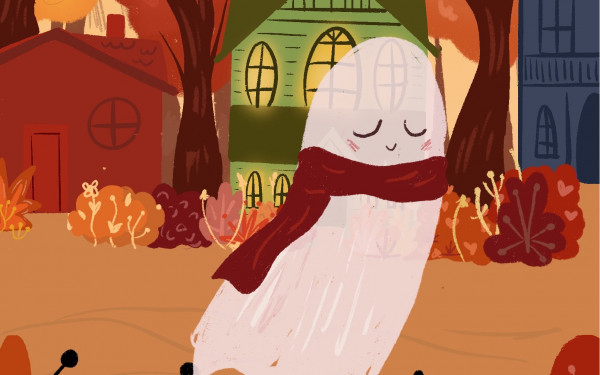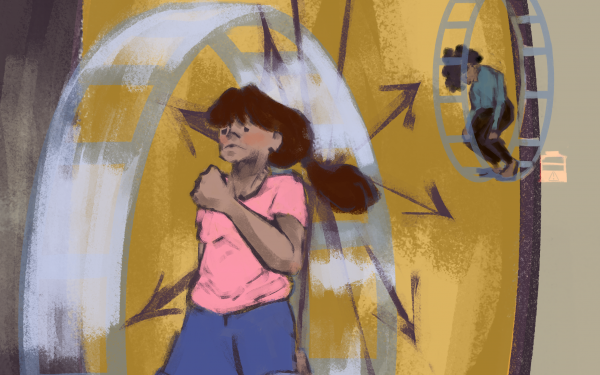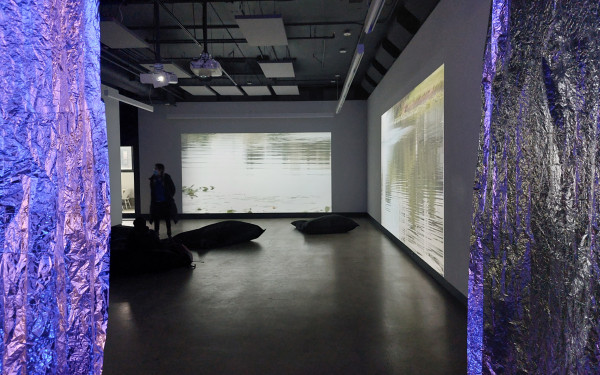Stuck in the trend loop
The impact of TikTok’s rapid-fire trend culture
Time might march on at its usual pace, but TikTok trends race ahead, leaving many of us struggling to keep up.
Online culture has carved out a new kind of in-group, where you either catch on or are left behind.
It comes as no surprise that algorithms are becoming pressingly faster, and our attention spans shorter. We spend far less time talking about one subject before we move on to the next, whether that be news, memes or drama. The speed at which we discuss topics reflects the rapid nature of trends, leading to a situation where both small and significant subjects are quickly overlooked as they fade from the spotlight in a matter of days.
I have actively been trying to reduce my consumption of online content for years now, but doing so raises some challenges.
While TikTok trends have certainly helped people find their niche and connect with others, it’s difficult for me to focus solely on the positives. Instagram has been my only connection to the digital world for the past four years, and even with that, I often feel like I’m missing out. The trend I just discovered? It’s already weeks old and no longer relevant—why am I still speaking about the mob wife aesthetic? With the sheer volume of content, even when I’m active, it’s easy to feel out of the loop. It can be overwhelming, not very mindful and certainly not demure.
When I’m in a room with people of different ages, I realize how disconnected TikTok trends are, almost sounding like a foreign language to those who aren’t online. Yet, perhaps that’s part of their appeal. Because they are so niche, they create a strong sense of belonging for some. Still, this does leave others feeling left out. The humour that often goes viral is very specific and subjective. What I find funny might not resonate with you, but now there’s this unspoken expectation that we should all be on the same page.
Have you seen this trend? No? Now it’s awkward. Wait, I’ll dig through endless streams of videos, hoping to land on the one clip that will somehow explain the joke.
I’ve heard people describe this exact humour as “braindead” or being “chronically online.” It’s not that it’s inherently bad, but it often requires a deep familiarity with online culture to fully get it.
Beyond my confusion—a sentiment I share with many non-TikTok users—it’s clear that these trends have a deeper impact, especially in terms of consumption. Fashion, once guided by a 20-year cycle, has been thrown off course. Now, in just four years, we’ve sped through multiple phases and aesthetics from E-girl to cottage core. Amazon storefronts encourage us to buy the latest trendy gadgets, things we’ll likely use once and forget about in a month. This constant motion desensitizes us to time and space, making it all feel fleeting and disposable.
Yet, of all things, underconsumption has recently become a trend—perhaps signalling a shift. Or maybe it will fade as quickly as it emerged.
I don’t have a bone to pick with any specific trend. While some might glamorize things that shouldn’t be glamorized or normalize problematic behaviours, like filming people without their consent, there are positive trends as well, like the recent surge in running.
However, it seems that moderation and critical thinking are where we struggle. Social media thrives on keeping us engaged, often pushing us to label, overconsume and categorize everything as an aesthetic. How can we move beyond this cycle—stopping the labelling, resisting overconsumption and letting go of the pressure to cringe when something falls out of trend?
I’m not here to yuck anyone’s yum. But maybe we could all benefit from touching grass a little more, disconnecting, and remembering that these trends are online for a reason.


_600_832_s.png)

_600_375_90_s_c1.jpg)


